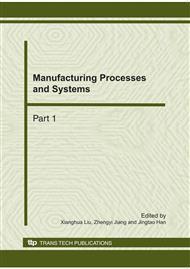p.429
p.434
p.439
p.443
p.449
p.453
p.458
p.462
p.467
Laboratory Evaluation and Application of New Materials Based on Mud Cake to Agglomerated Cake (MTA) Method
Abstract:
In order to solve the interlayer channeling in the process of oil and gas production, the forming agent of agglomerated cake and mud cake modifier based on Mud Cake to Agglomerated Cake (MTA) method are developed. The evaluation results in laboratory show that the bond strength of cement-formation interface (BSCFI) with the new materials increases significantly with curing time by comparison with those without new materials. The analysis shows that the mechanism of new materials includes three steps. Firstly, the forming agent of agglomerated cake modifies and treats the surface of mud cake and it reacts primarily with the mud cake modifier. Secondly, the cement generates in agglomerated cake. Lastly, the compact agglomerated cake forms. Field applications show that the high quality rate and qualified rate of well cementing with the new materials increased by 13.01 percent points and 1.15 percent points respectively, and the proportion of isolation section length whose Bond Index is greater or equal to 0.8 with the new materials increased by 15.92 percent points compared with other wells in the same block.
Info:
Periodical:
Pages:
449-452
Citation:
Online since:
October 2010
Authors:
Price:
Сopyright:
© 2011 Trans Tech Publications Ltd. All Rights Reserved
Share:
Citation:


